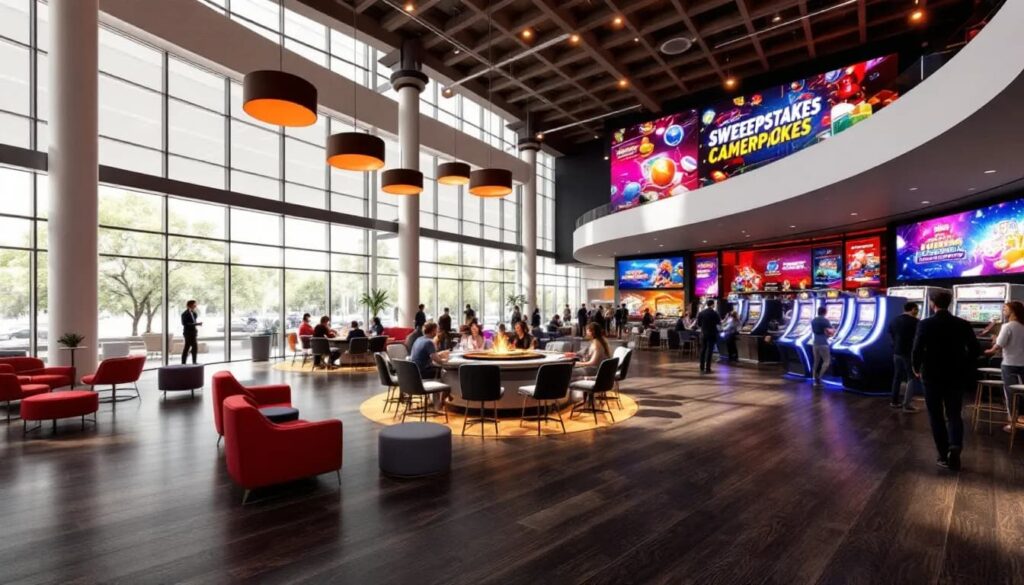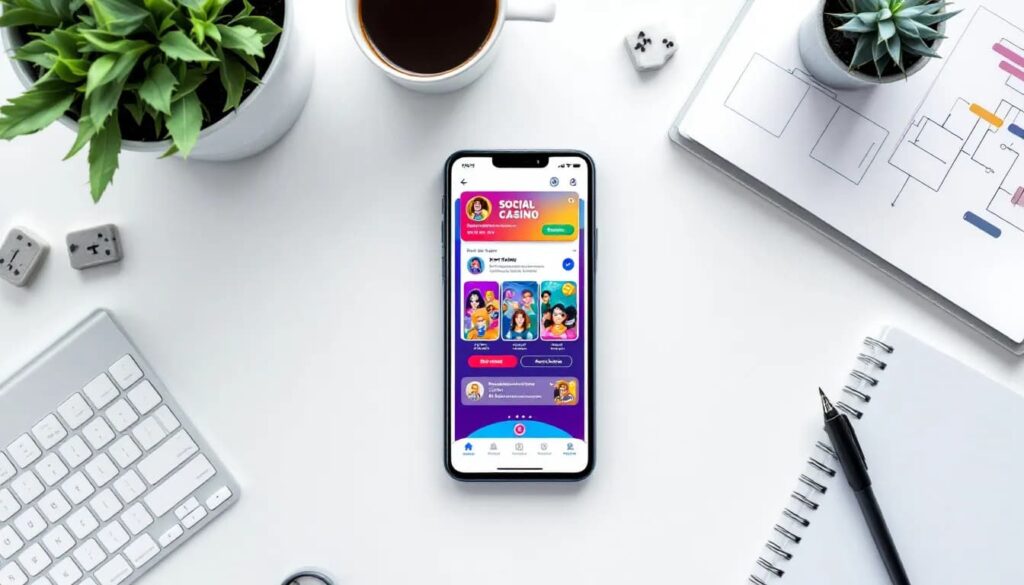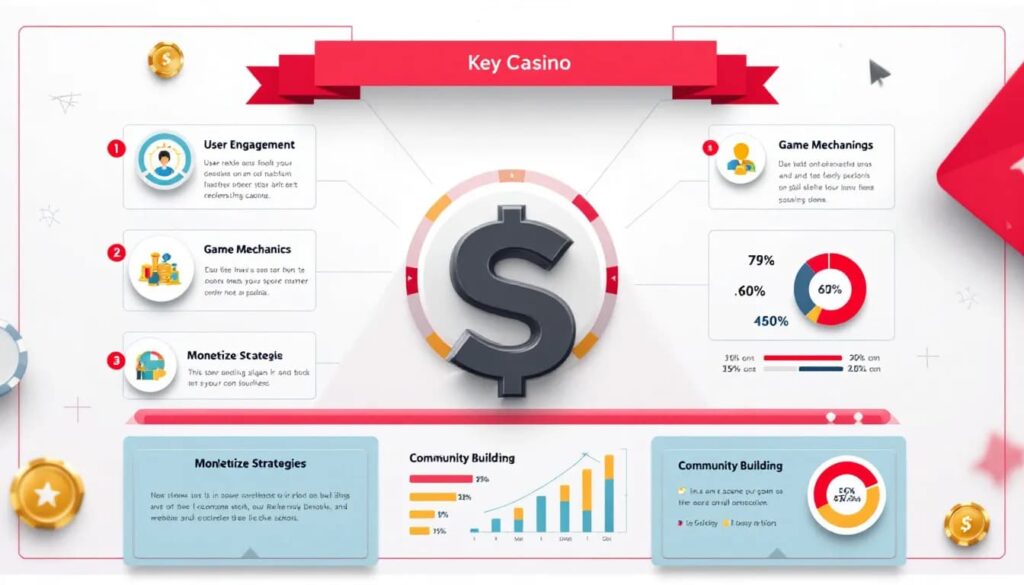
The Art of Social Casino Design: Sweepstakes
Sweepstakes have become a powerful tool in the digital entertainment industry, especially with the rise of social casino apps in the U.S. Sweepstakes have also become a significant trend in the gaming industry, driving innovation and attracting a wide audience. Unlike traditional gambling platforms, these apps allow users to experience the thrill of slots, poker, and other casino-style games without wagering real money directly. Instead, players engage in sweepstakes models—such as those offered by Sweepstakes Casino Sixty6—that blend gameplay with the potential for prize opportunities.
The foundation of this growth lies in social casino design, where every visual, interaction, and reward is carefully crafted to maximize engagement. In a highly competitive market, design isn’t just about aesthetics—it’s about creating an experience that feels rewarding, fair, and endlessly entertaining. Social casino apps offer engaging and rewarding experiences that keep users coming back, helping them stand out in the gaming industry.
At its core, successful casino app UX merges entertainment, psychology, and usability. When done right, it transforms a simple game into a thriving community where players return daily, not only for the games themselves but also for the sense of excitement and anticipation sweepstakes bring.
The Role of Design in Social Casino Apps

In social casino apps, design plays a much deeper role than surface-level visuals. It directly influences player retention, monetization, and loyalty. Design services are integral to the development of successful social casino apps, ensuring that every aspect of the user experience is carefully crafted for maximum impact. A well-designed casino UI ensures that players can jump into the action seamlessly, while subtle design mechanics keep them engaged long enough to form habits.
Designers must strike a delicate balance between fun, fairness, and user flow. Too much complexity can drive users away, while overly simplistic designs may fail to capture long-term interest. The art lies in guiding players through intuitive paths while layering in rewards and challenges that feel both attainable and exciting. Each design element can contribute to player engagement and retention.
By prioritizing social casino design, developers create apps that not only look good but also deliver an experience that aligns with players’ psychological motivations—curiosity, competition, and the thrill of chance. A skilled team is essential for delivering effective social casino design that meets these goals.
Visual Aesthetics and Brand Identity
Visual elements set the tone for a social casino app’s identity. Paying close attention to details in visual design—such as the intricacies of icons, backgrounds, and interface elements—ensures a polished and immersive user experience. Vibrant colors, graphics, and animations transport users into a digital environment that mirrors the sensory appeal of real-world casinos. From flashing slot reels to themed poker tables, the visual strategy communicates brand personality and reinforces immersion.
Seasonal themes—such as Halloween slots or holiday jackpots—add variety and keep content fresh through regular updates. For example, a social slots app might release limited-edition reels with festive backgrounds, encouraging players to log in during peak seasons. This kind of dynamic branding ensures the app feels alive and evolving, not static.
Animations also play a crucial role. Small wins might sparkle subtly, while jackpot wins explode with celebratory graphics, intensifying the reward experience. This attention to detail ensures that each visual moment reinforces excitement and engagement. Frequent updates to visual elements help maintain player interest and keep the gaming experience fresh.
UX/UI in Social Casino Design
Behind every great casino app lies thoughtful UX/UI design. Touch-based controls are essential for mobile devices, enabling players to directly interact with game elements and creating a seamless, immersive experience. Players should be able to navigate effortlessly, with intuitive controls and responsive layouts that adapt to different devices. In the U.S., where mobile gaming dominates, mobile-first design is no longer optional—it’s essential.
A robust platform is crucial for delivering a seamless user experience, ensuring scalability and compatibility across devices. Clear menus, one-tap actions, and consistent navigation patterns allow players to focus on the games rather than figuring out how to use the app. For instance, a player entering a sweepstakes slot game should instantly understand how to spin, how to redeem rewards, and where to view progress. Intuitive design also empowers users to easily choose their preferred games and features, enhancing engagement and personalization.
A polished casino app UX doesn’t just improve usability—it directly impacts retention. If players can’t find their way or encounter friction, they’ll abandon the app. On the other hand, smooth, intuitive design fosters long-term trust and loyalty.
Gamification in Social Casino Design
One of the strongest drivers of player engagement in sweepstakes apps is gamification. By incorporating game mechanics that tap into human motivation, designers keep users returning daily.
Common gamification features in social casino design include:
- Daily rewards: Encourage consistent logins with free spins or bonus credits.
- Leaderboards: Foster competition and community by ranking players.
- Progress bars: Provide a sense of achievement as players unlock new levels.
- Virtual currency systems: Allow players to “earn” chips or tokens while also opening opportunities for in-app purchases.
- Options for gameplay and rewards: Offer a variety of choices such as different game types, customization features, and scalable engagement strategies to enhance the user experience.
These mechanics transform a casual gaming experience into a long-term journey. By blending gameplay with rewards, social casino apps give users reasons to stay invested beyond the initial thrill of winning. Adding depth to game mechanics, such as incorporating various in-game assets and complex features, further increases player engagement. Classic games like blackjack are often included in social casino apps to diversify the experience and appeal to a wide range of players.
Psychology of Sweepstakes Engagement
The success of sweepstakes apps lies in how they leverage psychological triggers. Concepts like anticipation, near-miss effects, and variable rewards keep players hooked. A near-miss, for example, creates the illusion of almost winning, motivating players to try again. Community engagement features foster a sense of belonging among players, encouraging interaction and long-term participation. Understanding customer motivations is key to designing effective engagement strategies that attract and retain users.
Below is a comparison of engagement drivers:
| Engagement Driver | Traditional Casino | Social Casino App |
|---|---|---|
| Real-money stakes | Yes | No (sweepstakes model) |
| Sensory immersion | High (lights, sounds) | High (animations, music) |
| Variable rewards | Yes | Yes (virtual wins + prizes) |
| Community/social play | Limited | Strong (leaderboards, gifting) |
| Accessibility | Physical location required | Mobile, anytime |
By understanding these psychological dynamics, designers can craft social casino experiences that feel equally thrilling—without the risks of real-money gambling. New ideas for engagement can set a social casino app apart from competitors, driving innovation and enhancing the overall player experience.
Monetization and Player Retention Strategies
While social casino apps are free to download, their profitability depends on smart monetization strategies. In-app purchases allow players to buy virtual currency, while ad placements provide an additional revenue stream. Marketing also plays a crucial role in promoting in-app purchases and ad placements, driving user engagement and maximizing revenue. However, the key is balance—too many ads or pushy purchase prompts can break immersion.
The sweepstakes model is particularly effective for retention. Players can enjoy free play while still participating in prize opportunities, which keeps them coming back. This creates a sustainable cycle of engagement: players log in for the entertainment but stay for the possibility of winning. Retention strategies are carefully designed to meet player expectations and ensure ongoing engagement.
By integrating monetization seamlessly into social casino design, developers ensure the app feels rewarding rather than exploitative. Ready-to-implement monetization solutions can be quickly integrated into social casino apps, streamlining deployment and maximizing efficiency. This approach strengthens both short-term revenue and long-term loyalty.
Ongoing support is essential for maintaining player satisfaction and retention, ensuring smooth gameplay and addressing user needs post-launch.
Case Study: Successful Social Casino Design

Slotomania was created as a leading example of successful social casino design and is one of the most popular sweepstakes apps in the U.S. Its design strategy combines bright visuals, frequent rewards, and gamification elements that make every spin feel exciting.
The app is built on a scalable and robust platform, supporting high performance and seamless user experiences. Slotomania uses daily login bonuses, mini-games, and seasonal themes to maintain freshness. Its UI is designed for quick navigation, ensuring players can access slots instantly without confusion. Most importantly, its sweepstakes model keeps users engaged while staying compliant with U.S. regulations.
Frequent updates to Slotomania’s game library and features are crucial for maintaining its popularity and keeping players engaged. This blend of visual immersion, gamification design, and player-first UX has allowed Slotomania to remain a top player in the crowded casino app market.
Future Trends in Social Casino Design
The future of social casino design is evolving rapidly, driven by technology and player expectations. New technologies are transforming how developers approach social casino game design, enabling more engaging, interactive, and personalized experiences for users.
- AR/VR in gaming: Augmented and virtual reality can recreate the ambiance of real casinos, offering immersive environments where players feel as if they’re sitting at a slot machine or poker table.
- AI personalization: Artificial intelligence can tailor game recommendations, promotions, and rewards to each player’s behavior, providing personalized experiences based on player data, making the experience feel uniquely theirs.
- Ethical design: As conversations around responsible gaming grow, developers must balance fun with safeguards that prevent harmful play. Features like spending limits, session reminders, and parental controls will likely become standard.
There are many aspects to consider in social casino game development, from project management and social casino game design to related services such as quality assurance and compliance. Successful projects require a comprehensive approach, developing features based on user needs and providing solutions tailored to client requirements. By focusing on all elements related to the development process, teams can deliver complete social casino game projects that engage players and meet evolving industry standards.
FAQ
Q1: What makes social casino design different from regular casino apps?Social casino apps emphasize entertainment, community, and sweepstakes over real-money gambling. The focus is on fun and engagement rather than financial stakes.
Q2: How does gamification enhance social casino apps?Gamification increases engagement through systems like daily rewards, leaderboards, and progress bars. These features give players a sense of achievement and keep them returning. Players can also select different gamification features to personalize their experience.
Q3: Are sweepstakes in social casino apps legal in the U.S.?Yes, sweepstakes are legal as long as apps comply with U.S. regulations and avoid direct real-money gambling mechanics. Many operators carefully design around these rules to ensure compliance.
Q4: What trends will shape the future of social casino design?AI personalization, AR/VR integration, and enhanced responsible gaming features will define the next era of social casino design.
Q5: How do social casino apps protect against fraud and ensure user security?Social casino apps implement advanced security protocols to protect user data and prevent fraud. These measures help maintain the integrity of the platform and safeguard users from unauthorized access.
Q6: How can social casino apps help operators reach a wider audience?By leveraging social features, engaging content, and cross-platform compatibility, social casino apps help operators reach a broader audience. These strategies attract more users and support sustained growth.
Q7: Can social casino apps be customized to meet specific business needs?Yes, social casino apps can be customized to fit unique business requirements. Developers offer tailored solutions to adapt features, design, and functionality for a personalized experience.
Conclusion
The success of sweepstakes apps isn’t just about the games themselves—it’s about social casino design. From visuals and UX to gamification and monetization, design decisions shape every aspect of the player experience. By blending entertainment, psychology, and usability, developers create apps that captivate users and keep them coming back.
As the market evolves, design will remain a strategic advantage. For developers, marketers, and even players, recognizing the role of thoughtful casino app UX is key to thriving in this dynamic industry. The art of sweepstakes lies not just in chance—but in the design that makes every spin, every reward, and every experience unforgettable. According to Forbes’ analysis of sweepstakes casino legality, complianc, and design are deeply intertwined, shaping both user trust and industry growth.